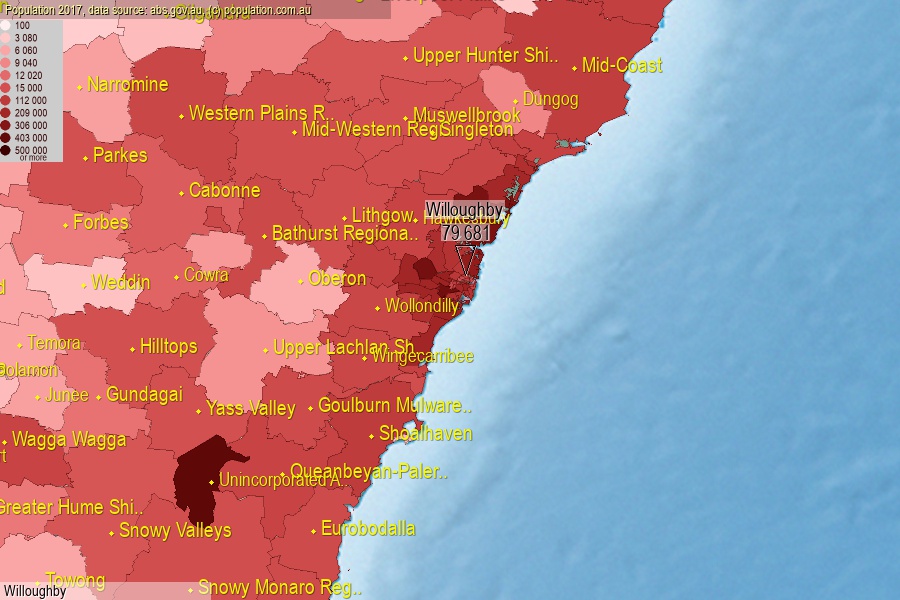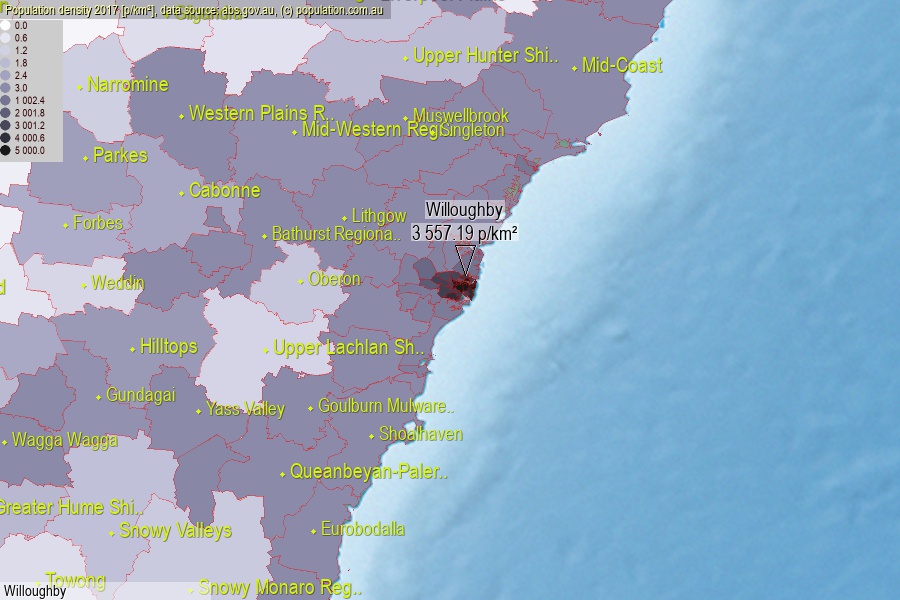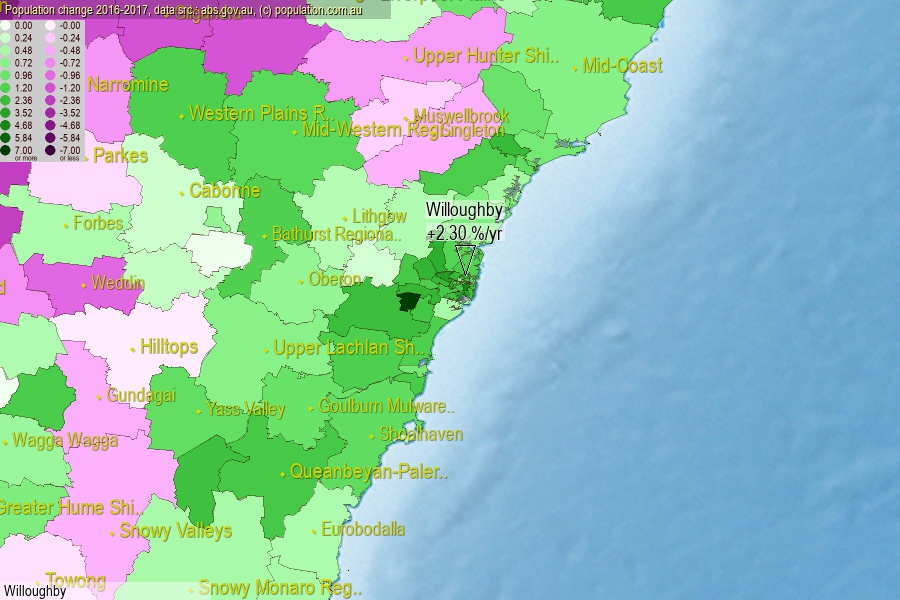 population.com.au
population.com.auLast official estimated population of Willoughby City (as Local Government Area) was 79 681 people (on 2017-06-30)[2]. This was 0.32% of total Australian population and 1.002% of NSW population. Area of Willoughby is 22.40 km², in this year population density was 3 557.19 p/km² . If population growth rate would be same as in period 2016-2017 (+2.3%/yr), Willoughby population in 2025 would be 95 594. [0]



Click to enlarge. Willoughby is located in the center of the images.
Population [people], population density [p./km²] and population change [%/year] [2]
[1996-2001] +1.69 %/Y
[2001-2002] +2.26 %/Y
[2002-2003] +0.96 %/Y
[2003-2004] +1.62 %/Y
[2004-2005] +1.81 %/Y
[2005-2006] +1.38 %/Y
[2006-2007] +2.00 %/Y
[2007-2008] +0.92 %/Y
[2008-2009] +1.58 %/Y
[2009-2010] +1.07 %/Y
[2010-2011] +1.26 %/Y
[2011-2012] +1.38 %/Y
[2012-2013] +1.32 %/Y
[2013-2014] +1.60 %/Y
[2014-2015] +2.33 %/Y
[2015-2016] +2.52 %/Y
[2016-2017] +2.30 %/Y
[0] Calculated with linear interpolation from officially estimated population
[1] Read more about LGA and Australian Statistical Geography Standard (ASGS) on abs.gov.au
[2] Population data from Australian Bureau of Statistics (Population and density: 2017; change: 2016-2017)
[3] Digital Boundaries: Australian Statistical Geography Standard (ASGS) 2016.